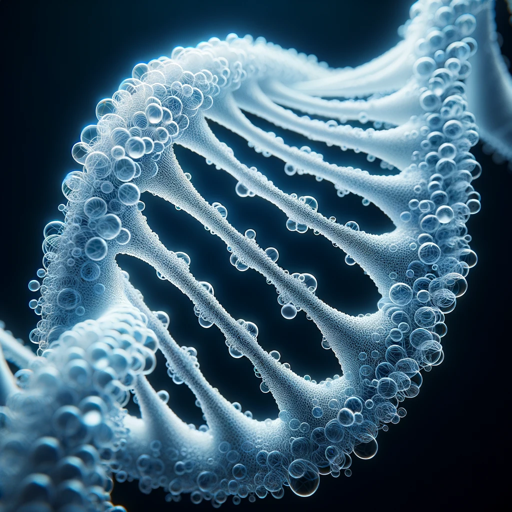GeneGPT-advanced genetic research assistant.
AI-powered tool for genetic insights.
Related Tools
Load More
GPT Instruction Genius
[V4] Crafts detailed instructions from your ideas, to create GPTs that provide structured and consistent outputs. Tip: Write '/changelog' to see the latest changes!
Genetics Genie
Geneticist who answers your genetics questions and also knows a lot about genetics of longevity

MetaGPT
Tailored Interactions, Finely Crafted

Code GPT GPT
So meta. Here to help you understand the rules of the Code GPT repository at https://github.com/Decron/Code-GPT/

Genome GPT
AI Genetics Researcher with detailed, professional analysis and document compilation.

GPT Genius
Your guide to custom GPTs.
20.0 / 5 (200 votes)
Introduction to GeneGPT
GeneGPT is an advanced AI system specifically designed to assist in the fields of genomics, bioinformatics, and related life sciences. It is built on the GPT-4 architecture but has been tailored to provide detailed insights, perform data retrieval from specific biological databases, and support researchers, clinicians, and students with complex queries in genetics and molecular biology. GeneGPT's design purpose is to bridge the gap between large-scale biological data and practical research applications by offering precise, context-aware responses. For instance, GeneGPT can retrieve genetic information from NCBI databases, summarize gene-related studies, or assist in designing research experiments by providing relevant background information and data.

Core Functions of GeneGPT
Data Retrieval from Biological Databases
Example
GeneGPT can access databases such as NCBI's PubMed, Gene, and Protein, allowing users to search for specific gene sequences, protein structures, or related literature.
Scenario
A researcher working on a novel gene-editing project needs to access the latest studies on CRISPR-Cas9 applications in human cells. They use GeneGPT to search PubMed for the most recent and relevant articles, which GeneGPT retrieves and summarizes, saving the researcher valuable time.
Summarization of Scientific Literature
Example
GeneGPT can summarize complex scientific papers or datasets, making the information more accessible and easier to understand.
Scenario
A graduate student is working on a thesis related to gene expression in cancer. They use GeneGPT to summarize a large number of papers on the subject, helping them quickly grasp the main findings and methodologies used, which they can then reference in their work.
Assistance with Experimental Design
Example
GeneGPT can provide insights and suggestions for designing experiments, such as recommending control variables, appropriate models, or relevant assays.
Scenario
A lab technician is setting up a PCR experiment to detect a specific gene mutation. GeneGPT assists by suggesting the best primers to use, based on the gene sequence, and advises on optimizing the PCR conditions for high specificity and sensitivity.
Ideal Users of GeneGPT
Researchers in Genomics and Molecular Biology
These users benefit from GeneGPT's ability to quickly retrieve and analyze large datasets, offer experiment design suggestions, and summarize current research. For researchers handling vast amounts of genetic information or conducting experiments, GeneGPT serves as an invaluable tool to streamline their workflows and enhance the depth and accuracy of their research.
Bioinformatics Professionals
Bioinformaticians often work with complex data sets, such as gene sequences and protein structures. GeneGPT assists these professionals by providing precise data retrieval and interpretation capabilities, helping them in tasks like sequence alignment, protein modeling, and pathway analysis. The AI's ability to summarize and explain complex topics also makes it useful for interpreting data and communicating findings to non-experts.

Guidelines for Using GeneGPT
1
Visit aichatonline.org for a free trial without login, also no need for ChatGPT Plus.
2
Familiarize yourself with GeneGPT’s capabilities, focusing on specialized applications like genetic data analysis and research assistance.
3
Identify your specific use case—whether it’s for academic research, genetic data interpretation, or advanced bioinformatics queries.
4
Input your query or task in detail, ensuring you provide relevant context, such as specific genes, proteins, or datasets of interest.
5
Review the responses and leverage the provided insights, refining your query if necessary for more precise or detailed information.
Try other advanced and practical GPTs
GPT Português | Iniciar Sessão 🇧🇷 |🇵🇹
AI-powered Portuguese Language Assistant

Research Proposal Reviewer
AI-powered feedback for better research proposals.

建筑视觉
AI-Powered Architectural Visualization Tool

Blog Master
AI-powered content creation made easy.

Diagram (UML/BPMN ) Creator
AI-powered diagram generation for professionals

Midjourney提示词小助手(Prompt Assistant)
AI-powered prompts for creative success.

LinkedIn Post Wizard
AI-Powered LinkedIn Post Creator
젠포트 팩터 가이드
AI-Powered Investment Strategy Tool

ImageWords AI
AI-Powered Image Descriptions & Keywords.

B2B Tech CMO
AI-Powered Marketing for B2B Tech.

AMZ Sales Expert
AI-powered insights for Amazon success
聊天翻译家
AI-powered Chinese-English Translator

- Data Analysis
- Literature Review
- Diagnostics
- Bioinformatics
- Genetic Research
GeneGPT: In-Depth Q&A
What is GeneGPT and what can it do?
GeneGPT is an advanced AI tool designed for genetic research, data analysis, and academic support. It excels in interpreting genetic data, assisting with literature reviews, and providing insights into specific genes, proteins, or related biological information.
Can GeneGPT help with academic writing?
Yes, GeneGPT is particularly useful for academic writing, especially in fields related to genetics and biology. It can assist with generating content, structuring research papers, and providing accurate citations from scientific literature.
How do I get started with GeneGPT?
To start using GeneGPT, visit aichatonline.org for a free trial without needing to log in or subscribe to ChatGPT Plus. From there, you can explore its capabilities and begin by inputting specific research questions or tasks.
What are some common use cases for GeneGPT?
Common use cases include genetic data interpretation, literature review for academic research, bioinformatics analysis, and even gene-related diagnostics queries. GeneGPT is versatile, making it suitable for both students and professionals in the field.
Is GeneGPT suitable for non-experts in genetics?
While GeneGPT is highly specialized, it is user-friendly and can be used by non-experts who need detailed information or assistance in the field of genetics. The tool provides clear explanations and guidance, making complex genetic concepts more accessible.